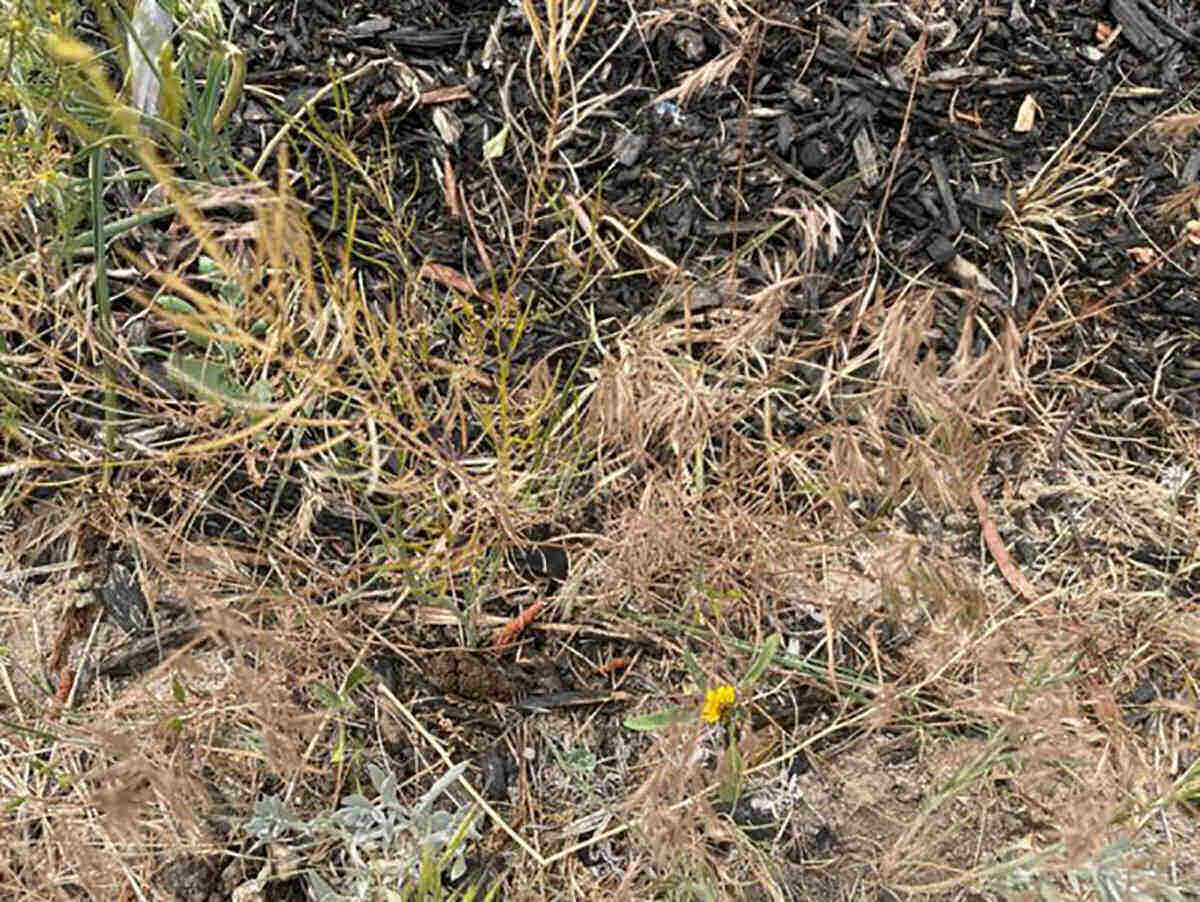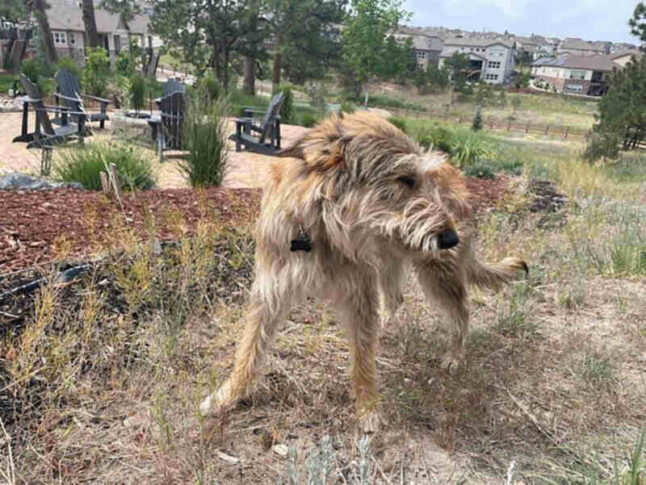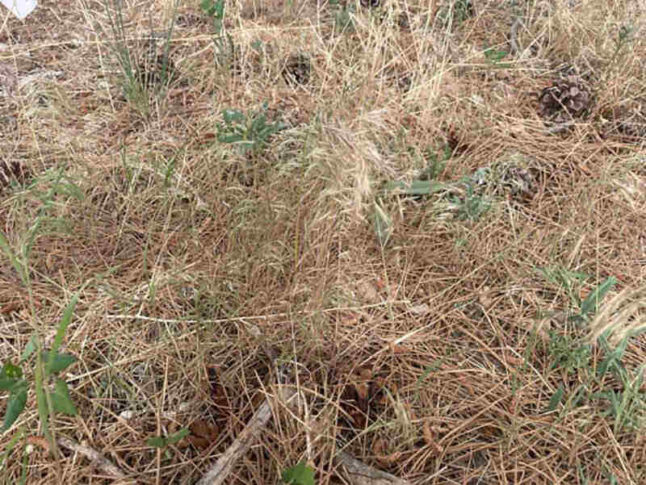
Cheatgrass just might be the most dangerous and invasive plant you’ve never heard of. It’s also known as downy brome, soft chess, broncograss, and downy chess. These are all lovely names for a surprisingly hazardous plant.
Here we’ll talk about where cheatgrass comes from, why it’s dangerous, and what you can do to stop this invasive weed from spreading.
What is Cheatgrass?
Cheatgrass (Bromus tectorum) is an annual invasive grass found throughout the United States. Most popular on rangelands and roadsides, this weed is finding its way into more backyards and neighborhoods.
Where Cheatgrass is found:
- Utah
- California
- Idaho
- Oregon
- Nevada
- Montana
- Colorado
Cheatgrass is native to parts of Europe and Asia. Settlers brought cheatgrass to North America in the 1800s. Poor farming and ranching practices allowed cheatgrass to take hold.
Cheatgrass adapts easily to various soil and moisture conditions. It grows rapidly with a shallow root system, allowing it to dominate resources before native species begin to grow. The growing season is relatively short, with the plants sprouting in fall and dead by late spring.
5 Reasons You Don’t Want Cheatgrass in Your Yard

Pretty much all non-native species of plants and animals cause yellow grass and other lawn problems. Ecosystems are delicately balanced, and any single disruption can cause countless issues. As an invasive species, cheatgrass is no different.
1. Fire hazard
The biggest concern regarding cheatgrass? Flammability. With fine leaves and stems, cheatgrass ignites almost as fast as gasoline. The heat from a vehicle or the cinders of a campfire can be enough to start a cheatgrass blaze. You can read more about the Dangers of Cheatgrass.
2. Competes with native species
Anything invasive is competing for resources with native grasses and plant species. The U.S. Department of Agriculture and the Forest Service are most concerned with its ability to overtake grazing areas and native vegetation.
Cheatgrass is especially good at this, frequently creating a monoculture. Many native plants don’t do well in soil with the strong nitrogen concentration following a wildfire. This adaptation automatically gives cheatgrass an advantage.
3. Water hog
Cheatgrass also has shallow root systems, which usurp much of the available water before it has a chance to travel deeper towards native species’ roots. These shallow roots can lead to soil erosion.
4. Spreads easily
In addition to winning the competition for resources, cheatgrass spreads easily and germinates quickly. These winter annuals typically spread seeds in the fall, lie dormant in winter, and blossom in early spring when warmth and precipitation return. Each plant can produce as many as 5,000 cheatgrass seeds which can lay dormant for as long as three years.
5. Harms pets
Cheatgrass seeds will find their way onto and off of pets without their ever noticing. However, if those seeds have the right opportunity, they can be very dangerous.
When the seeds attach to areas such as the toes, ears, or nose, they can migrate into the tissue. This will cause extreme irritation and need to be cared for by a veterinarian. Pets can also inhale cheatgrass seeds, causing issues to their lungs and abdomen.
The seeds are hairy with lots of sharp awns or bristles. This allows them to attach to small birds and animals, hitching their way to new destinations. Cheatgrass seeds also travel on wind and water like most other seeds.
How to Identify Cheatgrass vs Ornamental Grasses

Ornamental grasses add texture and variety to your lawn and germinate in the spring. Cheatgrass seeds germinate in the fall, and the plants stay small throughout the winter. It is easiest to identify in the spring when the available moisture allows it to produce reddish-tan seed heads.
This bunchgrass reaches about 10 to 20 inches tall and is easy to identify by its droopy seed heads. These seed heads are soft and fuzzy, earning cheatgrass the nickname downy brome.
The best way to identify noxious weeds and other unknown plants is by viewing images online. Many free smartphone apps will help you identify plants by simply taking a photo and running it through the database.
Eradicating Cheatgrass
Due to the fast-spreading qualities of cheatgrass, you will probably have to use an integrated approach to completely remove the plants. Read “How to Get Rid of Cheatgrass” for more on chemical and manual methods of eliminating this invasive.
Growing your lawn is an effective way to eliminate cheatgrass. Annual grasses that grow aggressively will choke out the unwanted weeds.
Preventing Cheatgrass From Invading
- Identify the intruder – Knowing your enemy helps you defeat it and prevent an infestation. Once you know what to look for, you can stop the spread before it starts. Early detection makes it easier for you to remove the plants either by hand or with herbicides.
- Water – Keep the soil moist and improve conditions for perennial grasses, which will crowd out the invaders. Cheatgrass prefers dry conditions.
- Avoid undue wear on vegetation – Overgrazing, vehicle disturbance, and other wear invite cheatgrass. Monitor new growth and be proactive in eradicating noxious weeds while promoting native growth.
FAQ About Cheatgrass
Take a close look at your pup’s paws, ears, face, and body. Carefully remove any seeds or pods you find. This is similar to looking for ticks or other tiny hitchhikers.
If your dog is acting oddly, there are reddened and irritated skin areas, or you simply sense something is wrong, make an appointment with your vet immediately.
No. Like most other grasses and weeds, you probably don’t want to add cheatgrass to your side salad. However, the cause of concern here is the high flammability and stress on the local ecology.
Many grazing animals happily eat young cheatgrass. Cows, sheep, and goats will snack on the small bunches before the plants grow seed pods and begin to die off in mid-spring. Cattle will often eat cheatgrass alongside perennial cool-season grasses.
Though equally annoying, there are differences between cheatgrass and this other annual species. Foxtail grows much larger than cheatgrass. Some foxtails surpass 3 feet, with fuzzy seed pods around 8 inches long.
Though invasive, foxtail doesn’t pose a fire hazard like cheatgrass does. The biggest concern here is with the many spikelets on each seed pod. These can easily attach to animals, clothing, and other outdoor items.
All of this can seem a bit overwhelming. If you need help getting rid of cheatgrass or any other invasive weed, we’ll find a local LawnStarter pro, near you.
Main Photo Credit: Brenda Ryan / LawnStarter